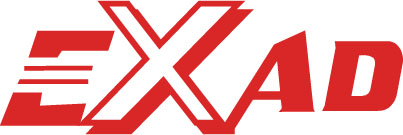Among many stainless steel materials, 304 series stainless steel is very popular and often appears in various occasions. Why is it so popular? This has to start with its excellent performance.
And in different usage scenarios, it is very important to choose the right 304 series stainless steel grade. Today, let’s take a good look at their differences and applications.
What is 304 Stainless Steel?
304 stainless steel has its own unique “formula”. Its basic ingredients include important elements such as iron, chromium, and nickel. The chromium content is about 18%, and the nickel content is about 8% – 10.5%.
It is the combination of these elements that gives 304 stainless steel many excellent properties. For example, its corrosion resistance is very good. It is not easy to be corroded in general atmospheric environment, fresh water environment and some weak acid and alkali environment.
Moreover, the appearance of 304 stainless steel is also very beautiful, with a bright surface and good processing performance. Whether it is bending, stretching or stamping, it can be completed relatively well.
Because of this, its application field is so wide. In our daily life, such as various tableware and sinks in the kitchen. There are also some decorative stainless steel products at home. Many are made of 304 stainless steel.
Differences Between 304, 304L, and 304H Stainless Steel
304 vs. 304L Stainless Steel
First, let’s talk about the difference in carbon content, which is a key difference.
The carbon content of 304 stainless steel is less than or equal to 0.08%. The carbon content of 304L stainless steel is more stringent, less than or equal to 0.03%. It is a real “low-carbon expert”.
So what are the benefits of this low carbon? When the carbon content is low, its corrosion resistance will be further improved.
In some occasions where welding is required, if you don’t want to anneal after welding, 304L is particularly suitable. Because it has a relatively low risk of intergranular corrosion after welding. It can ensure that the welding part also has good performance, and the overall quality will not be affected by the welding operation, which makes people worry less.
304 vs. 304H Stainless Steel
Let’s take a look at 304H stainless steel. Its characteristic lies in this “high carbon”, and the carbon content is between 0.04-0.10%. Don’t underestimate this high carbon content, it brings a unique advantage to 304H. That is, the strength performance in high temperature environment is particularly good.
In those high temperature environments, such as boilers and heat exchangers. To work under high temperature conditions for a long time, general materials may become soft and their strength decreases at high temperatures.
However, 304H stainless steel clad plate can maintain good strength with the advantage of its high carbon content. It will not fail because the material cannot withstand high temperatures. Therefore, in these high temperature environment application scenarios, 304H is a well-deserved “main force”.
Other 304 Variants: 304N, 304F, 304D
304N Stainless Steel
304N stainless steel is a bit unique. It contains nitrogen. This nitrogen element can improve its strength and corrosion resistance.
In some structures that need to bear a large weight, such as some load-bearing brackets in buildings and some structures of bridges, 304N stainless steel composite plate can better bear the weight and ensure the safety and stability of the entire structure.
304F Stainless Steel
The advantage of 304F stainless steel lies in its cutting performance. It has been specially optimized and is very smooth when processed on an automatic lathe. It can be processed quickly and well, which can greatly improve the processing efficiency.
304F stainless steel panel is particularly suitable for those occasions that require a lot of mechanical processing and have requirements for processing accuracy and speed. It is a “good helper” in the field of mechanical processing.
304D Stainless Steel
There is also 304D stainless steel, which has unique low-temperature resistance. In some low-temperature environments, such as frozen warehouses, low-temperature transportation equipment, etc. Ordinary stainless steel may become brittle and prone to damage.
But 304D stainless steel metal sheet is different. It can still maintain good toughness and performance in low-temperature environments. It can also ensure the normal operation of equipment in low-temperature environments.
Key factors in choosing the right grade
Use environment
When we choose 304 series stainless steel grades, we must first consider the use environment.
If this stainless steel product has to work in a high temperature environment, such as boilers, heat exchangers, etc., then 304H may be the first choice. If it is in a low temperature environment. For example, low temperature storage and transportation related equipment, then 304D should be on the scene. If the use environment is relatively corrosive, then 304L, which has good corrosion resistance, or 304N, which has good strength and corrosion resistance.
Mechanical properties
Mechanical properties cannot be ignored either. You have to see what kind of strength and ductility the material needs to have. If the product needs to withstand a relatively large force. Like a load-bearing structure, then the high-strength 304N is more suitable.
Processing technology
Processing technology is also an important consideration.
If welding is required, then 304L, which is not prone to problems after welding, is very suitable. If it is mainly for cutting, 304F, which has good cutting performance, can be of great use.
Cost considerations
Of course, cost is also something that needs to be carefully considered. Each project has its own budget. We have to see which 304 series brand has the best cost-effectiveness while meeting performance requirements.
Sometimes, the price of a brand with good performance may be higher, so we have to weigh it. This requires comprehensive consideration of all aspects to make a decision. After all, it is necessary to ensure both material performance and economic efficiency.
Conclusion
The 304 series stainless steel offers diverse options to meet different application needs. Whether prioritizing corrosion resistance, high-temperature strength, low-temperature toughness, or machinability, choosing the right grade is crucial.
By understanding the key differences between 304, 304L, 304H, 304N, 304F, and 304D, you can make informed decisions to optimize performance and cost-effectiveness for your projects. Selecting the right stainless steel ensures durability, efficiency, and reliability in various industries.



